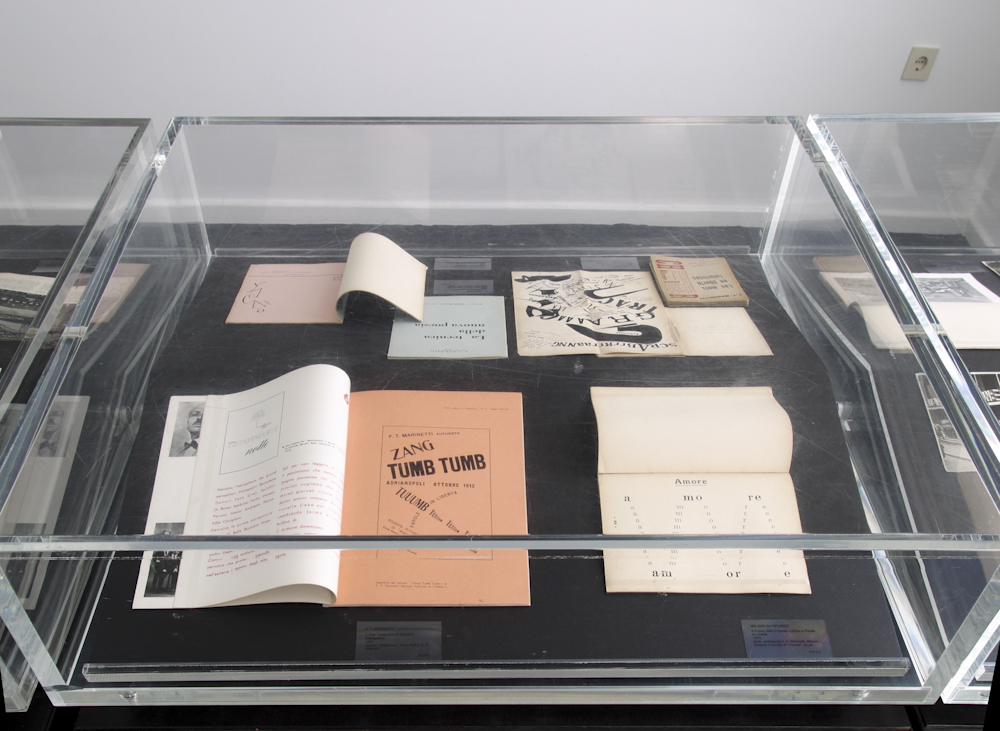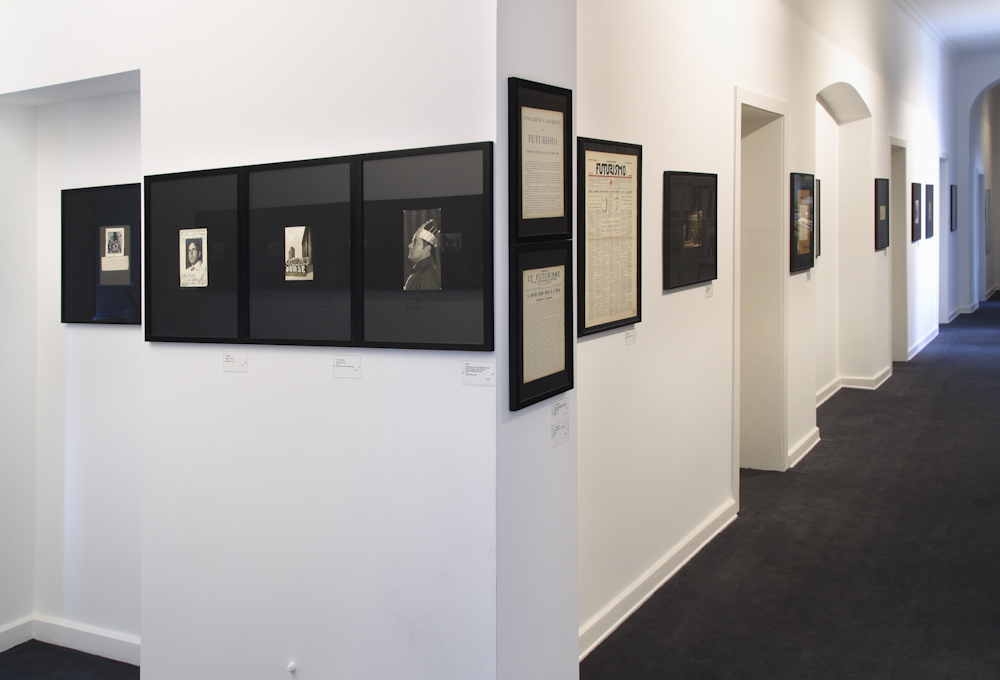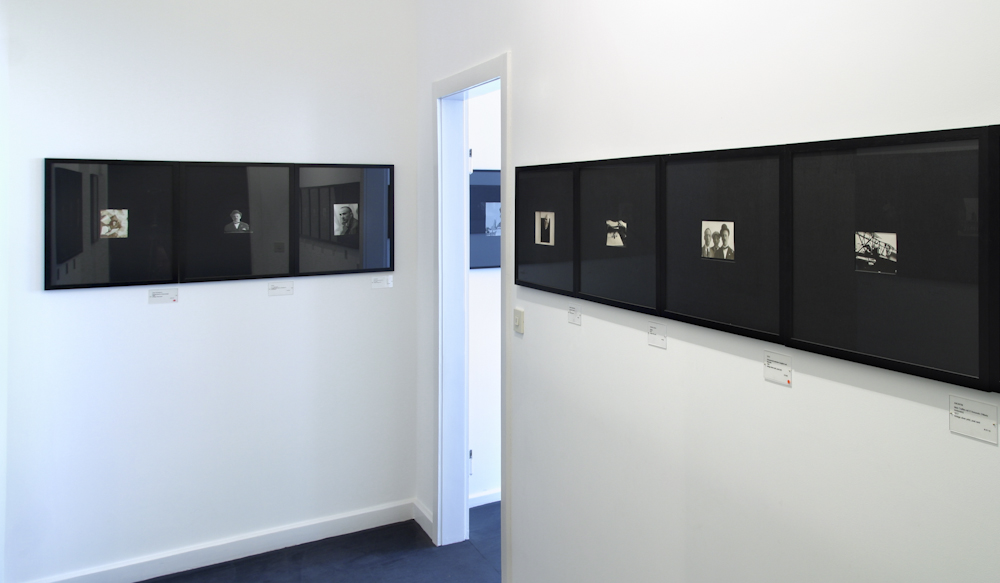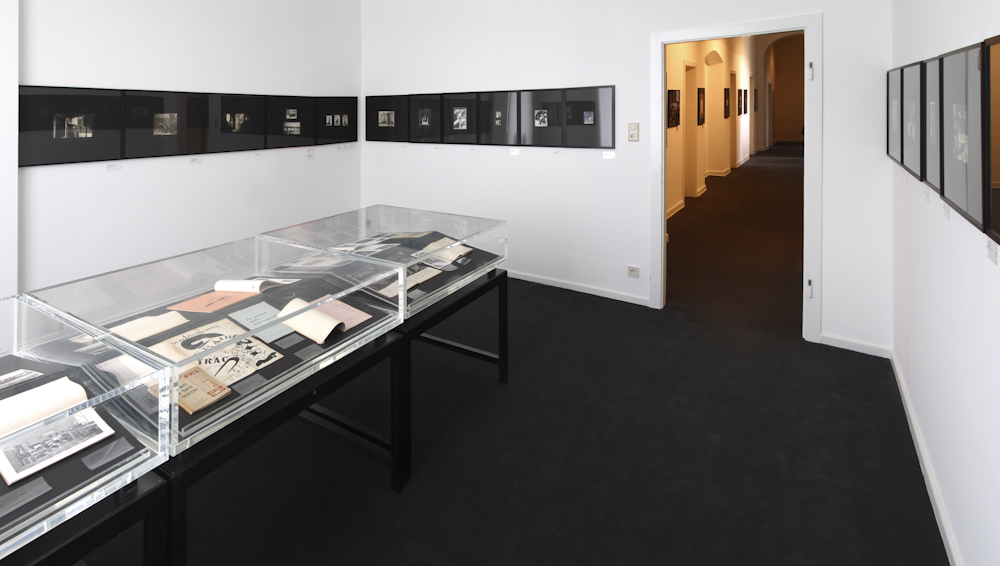FUTURISM
Vintage Photographs, Drawings and Books
April 25th – July 31st, 2003
“A racing car, whose body is decorated by giant pipes, a screaming car, is more beautiful than the Nike of Samothrake…”
With this aesthetic credo, the Futurists celebrated the birth of a new movement, which established for the first time as central measure the beauty and dynamism of technology in an industrial world.
Originating from poetry and painting, for the duration of their thirty-year existence the Futurists embraced all spheres of art production: sculpture, theater, dance, cinema, music, design and architecture. Photography found, after an initial rejection, a manifold application within the movement: as artistic medium under the catchword “Photodynamism” with the goal of representing movement – in the form of montages and collages, self-portraits of the protagonists and, not lastly, to document the multiple activities of the Futurists themselves.
Presented here are photographs featuring collage/montage, portraiture and important documentary photographs portraying the Futurist movement itself. Among the montages and collages, alongside works of Gino Soggetti and Fillia, the series of compositions and self-portraits of the artist Adele Gloria deserve special attention.
A great number of the Futurists made use of the photographic portrait for purposes of self-propaganda, whereby the works range from those manipulated in the darkroom to, ironically enough, the straight studio portrait in bourgeois costume.
In order to document their activities and propagate the movement in the public print media, photography proved the ideal medium. Photographs originated – made by the Futurists themselves or by professional photography studios – of dance performances, stage design, costumes, architectural models and sculptural works.
The utopian, artistic concept of the Futurists was designed to destroy bourgeois tradition, whereby the basic premise included the postulate of dynamism in a technological society and the simultaneity of perception. Their revolutionary concept was realized especially on the border between literature and painting under the motto “Parole in Liberta” (word in freedom). With their free typographic constructions they destroyed the force of classical order and created scriptural pictures with dancing words and sounds which could be construed “simultaneously” by the reader.
In general, the Futurists accompanied and defined all spheres of their art production with manifests, books and newspapers. The multi-lingual written documents of the Futurists point to the internationality of their intent and their close relationships to the avant-garde movements in Europe. Above all, Dadaism and Surrealism embraced the artistic inventions of the Futurists, such as montage and sound poems.
“A racing car, whose body is decorated by giant pipes, a screaming car, is more beautiful than the Nike of Samothrake…”
With this aesthetic credo, the Futurists celebrated the birth of a new movement, which established for the first time as central measure the beauty and dynamism of technology in an industrial world.
Originating from poetry and painting, for the duration of their thirty-year existence the Futurists embraced all spheres of art production: sculpture, theater, dance, cinema, music, design and architecture. Photography found, after an initial rejection, a manifold application within the movement: as artistic medium under the catchword “Photodynamism” with the goal of representing movement – in the form of montages and collages, self-portraits of the protagonists and, not lastly, to document the multiple activities of the Futurists themselves.
Presented here are photographs featuring collage/montage, portraiture and important documentary photographs portraying the Futurist movement itself. Among the montages and collages, alongside works of Gino Soggetti and Fillia, the series of compositions and self-portraits of the artist Adele Gloria deserve special attention.
A great number of the Futurists made use of the photographic portrait for purposes of self-propaganda, whereby the works range from those manipulated in the darkroom to, ironically enough, the straight studio portrait in bourgeois costume.
In order to document their activities and propagate the movement in the public print media, photography proved the ideal medium. Photographs originated – made by the Futurists themselves or by professional photography studios – of dance performances, stage design, costumes, architectural models and sculptural works.
The utopian, artistic concept of the Futurists was designed to destroy bourgeois tradition, whereby the basic premise included the postulate of dynamism in a technological society and the simultaneity of perception. Their revolutionary concept was realized especially on the border between literature and painting under the motto “Parole in Liberta” (word in freedom). With their free typographic constructions they destroyed the force of classical order and created scriptural pictures with dancing words and sounds which could be construed “simultaneously” by the reader.
In general, the Futurists accompanied and defined all spheres of their art production with manifests, books and newspapers. The multi-lingual written documents of the Futurists point to the internationality of their intent and their close relationships to the avant-garde movements in Europe. Above all, Dadaism and Surrealism embraced the artistic inventions of the Futurists, such as montage and sound poems.












